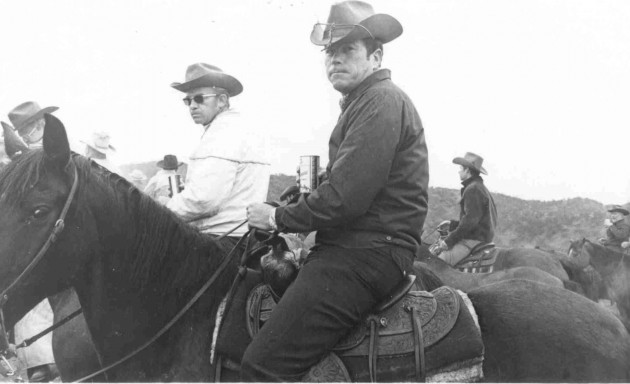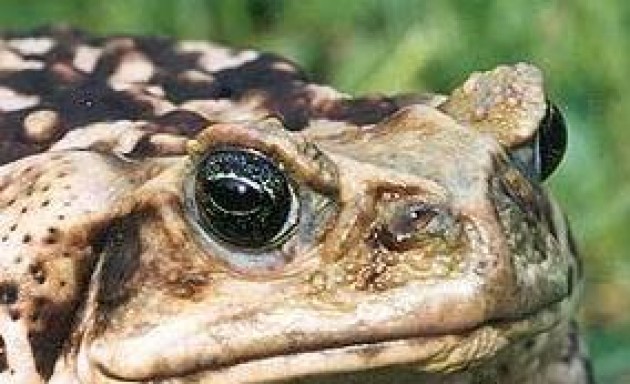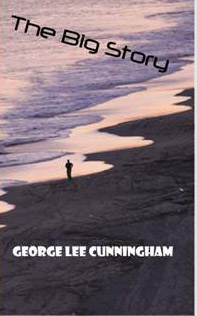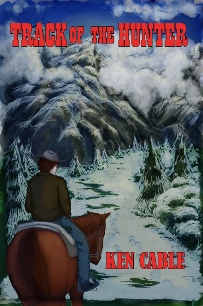Waiting and Watching: In the Path of a Tsunami
By: Ken Cable
About a dozen of us stood looking out to sea from the third floor overlook at Paki Maui resort waiting for the wave to materialize from out of the blackness. It was October 27, 2012. We had just learned that a 7.7 earthquake had hit off Canada’s west coast and that a huge tsunami was rolling across the Pacific Ocean and would collide with Maui at precisely 10:28 p.m. The expected height of the surge was estimated at five-and-a-half feet – potentially devastating.
The Hawaiian Islands lie in the middle of the Pacific Ocean, farther from any continental land mass than any other island in any other ocean. Viewed from that perspective, we were a forlorn little group huddled in a faraway place waiting for an angry tidal wave to surge over our seawall and sweep us away. All we needed to complete the Hollywood scenario was for the Fire Goddess Pele to stir things up on Haleakala, Maui’s dormant volcano.
Actually, we were more festive than forlorn, mainly because our full-time resident experts told us not to worry, the tsunami – if it arrived – would smack into the windward (east) side of Maui and we were safely on the lee (west) side. Thus assured, we chatted and joked, but I noticed that we checked the water level in the lagoon often. The clock ticked on.
When news of the Canadian earthquake interrupted most programs, all TV stations in Hawaii focused exclusively on the potential for a large tsunami. Authorities throughout the islands were ordering residents and visitors on the coastlines to evacuate to higher ground. TV shots of Honolulu demonstrated very clearly the enormous difficulty (in my view, impossibility) of suddenly evacuating large population centers anywhere in the world. The city was gridlocked by cars trying to flee to higher ground.
Here on Maui, we were jolted by shrieking sirens sounding up and down the coast. A police helicopter flew low along the condos and hotels with its own siren sounding a warning from the sky. It wasn’t long before policemen were running through our condo development, pounding on the first floor doors and ordering everyone to evacuate.
There is a new (new to us, anyway) approach to evacuation in Hawaii ahead of a potential tsunami. It’s called, Evacuate Up. We were told to climb at least to the third floor of our building, which would place us above even a severe wave strike. This is a reassuring tactic for us given that our building is a man-made Pali (cliff). Its construction is steel reinforced concrete and cinder block. A nearby earthquake a few years ago caused a crack in one corner, but the rest of the buildings only quivered a little.
So, as we got ready to evacuate up, a friend with an apartment on the third floor, appeared in our doorway and invited us to join him and his wife and some other neighbors in his home to wait out the threat. We happily accepted.
At 10 p.m. the sirens sounded even more urgently, and those of us on the overlook stared even more intently out to sea.
About two years ago, an earthquake near the Big Island (Hawaii) created a tsunami that did impact Paki Maui. The surge struck the windward side, then wrapped around the island to push up over our seawall so it could deposit sand and salt water on our lawn. This, our friends assured us, would be the only thing that might happen this time. The clock ticked on.
Hawaiians are justifiably concerned when a tsunami alert is sounded. They listen when authorities warn them to evacuate the coast. In 1960, an earthquake in Chile sent a huge tsunami across the Pacific that slammed into Hilo on the Big Island killing 61 people and destroying five hundred structures. The wave that struck Hilo was estimated at 35 feet. Even though our immediate threat was so much less, people headed for higher ground. A 35-foot wave just might reach up to our third floor overlook.
At 10:20 p.m. landscape lights cast soft illumination into our lagoon to reveal small wavelets lifting over the outer and inner reefs. We could clearly see the white foam as each one crested. Then it was 10:25, :26, :27 – and then 10:28. Our evacuees grew silent, :29, :30, :35, :50, then 11:00 o’clock came and went. No tsunami. At 11:30, we thanked our hosts, un-evacuated and went to bed. We awoke the next morning to overwhelming tranquility. The islands of Lanai and Molokai remained where they’ve always been, and the tide was ebbing slowly to reveal our outer reef. The windward side of Maui had experienced a two-foot surge that did not wrap around the island to our side.
I hope that no one reading this assumes that I take lightly the threat of tsunamis to any part of the world. In recent years we have seen the utter desolation these events can create. The threats are real to coastlines all over the world – just as are hurricanes that rise up out of the Gulf of Mexico and the Atlantic Ocean to regularly devastate other parts of the United States. Hurricane Sandy, which recently ripped into the East Coast is a devastating example.
Tornadoes, blizzards, fire storms and floods are all part of our collective experience and confirm that in the end, nature rules. When warnings come to nothing, we should count our blessings – and congratulate the men and women whose job it is to prepare us for these events – whether or not they come to pass. Hawaii did that very well.
It is evening several months later in Paki Maui. Sunset is upon us and we are compelled to watch. It is so much nicer than waiting for a tsunami. Aloha.
Ken Cable is a nature and travel writer. His new novel “Track of the Hunter” about a 16-year-old forest service intern on the trail of a poacher is due out this summer. His first novel, “Lost!” about three young boys attempting to survive in the high Sierras during a spring storm can be ordered at www.readerpublishing.com.
Read MoreA Ride up Coast and a Look out to Sea
By: Ken Cable
He surged up out of an incoming wave like a Jules Verne sea monster and stormed through the surf to the sandy shore, bellowing loudly all the way. Of course, he was just showing off for all the lady elephant Seals already ashore. What he got for his troubles were not squeals of delight from the fairer seal-sex, but an even louder challenge from a bull seal already claiming this patch of beach. They charged each other (now, this needs some explaining; ‘flopping’ is a more accurate description of a bull elephant seal charge) slamming together chest to chest, open mouths emitting roars that would do a lion proud, trunk-like snouts distended. Then the biting begins and in short order, the interloper turns and flops away to seek a lesser adversary.
We witnessed this timeless conflict on a beach near Piedras Blancas lighthouse along California Highway 1 just north of San Simeon. We were not alone. Since these ocean going behemoths began hauling out at Piedras Blancas, people began stopping to watch. It soon became apparent that people – and the seals – needed protection. A large parking area was created and a board-walk and fence was installed along the beach to keep them separated, and to insure the seals would not be disturbed.
My wife, Dorothy and I were on a five-day visit to San Luis Obispo. We took the opportunity to re-explore California’s beautiful coastline along its famous Highway 1. The beauty never changes. Morro Rock still stands tall at the entrance to the bay. Northward, every bend and rise in the road reveals the rugged rocks that first feel the brunt of inbound combers that continue to carve the California coast. And rugged though it may be this forbidding looking seascape is home to thousands of birds and seagoing mammals that find its harshness to their liking. Gulls, brants, pelicans and shorebirds – varieties too many to list here, share this habitat with otters, seals, sea lions, Grey whales – and some humans.
The human inhabitants of this pristine coast, live slightly inland, safe from the pounding waves and sharp rocks – well, mostly safe. Some venture into this surging sea on purpose.
Lunch at the Schooner in Cayucos provided us a ringside seat to watch surfers in action. The weather was unusually sunny the week of our visit, and the surfers were in the water. To our right, an ancient looking wooden pier extended a few hundred yards out to sea. Our surfers were gathered to the left of this rickety structure. As they positioned themselves to catch just the ‘right’ wave, several shore bound surfers at Schooner’s bar, commented; “Watch Bevo,” said one. “He’ll take the next wave and shoot the pier.” When the next wave began to swell we watched a surfer, we assumed it was Bevo, launch himself as the wave broke. He stood up, skimmed down the slope of rushing water, disappeared in the curl, emerged near the pier and shot between the pilings before accomplishing an acrobatic turn to begin paddling back out to the wave line. This obviously hazardous maneuver met with sounds of approval by all the watchers in Schooners.
In spite of it being February, with the tourism tide at ebb, several hundred people had gathered at Piedras Blancas to watch the elephant seals as they cycled through their procreation tableau on this remote beach. Here, seal pups weighing 60 to 80 pounds are born. And here, the breeding of future generations takes place, all in a melee of bellowing, fighting bulls, females nursing young, gulls screaming and humans watching in awe.
Bull elephant Seals weigh from 3 to 5 thousands pounds. Average length is 14 to 16 feet, but some grow to 20 feet. The females are more petite, weighing in at only 9 to 18 hundred pounds and a mere 9 to 12 feet in length. Pups are weaned at between 250 to 350 pounds, weight gained exclusively from their mother’s milk.
These huge seals feed on squid, octopus and a variety of bottom fish. Males spend about 8 months of the year at sea; females are out 10 months before coming in to some lonely beach to give birth and breed the next generation. These mammalian mariners can dive more than a mile deep and remain under water for up to an hour. They are constantly diving, spending only about ten-percent of the time at the surface. The chief predators of these giants are Great White sharks and ‘Killer’ whales.’ This list used to include man who relentlessly hunted them for their oil. Reduced to just a few dozen, this vanishing species came under the protection of the Marine Mammal Protection Act of 1972 and has made a remarkable recovery up and down the Canadian and American west coast.
Elephant Seals derive their common name from their large noses that, when extended, resemble the trunk of their namesake. It is thought that this adaptation is a secondary sexual characteristic designed to intimidate other males with lesser shnozzes and win favor with the ladies. I guess only a lady elephant seal would really know.
These creatures are in the order Pinnipedia, meaning fin footed; they are cousins to sea lions and walruses and all lesser seals. Elephant seal fore flippers have 5 digits – with nails. This helps most researchers agree that all seals were once land mammals evolving from terrestrial carnivores that adapted to life in the sea. There is some dispute about whether these terrestrials were dog-like beasts, otter ancestors or bears.
It is February and it is supposed to be winter along the California coast. Most people know that and don’t bother to visit until spring and summer. Therefore, the traffic on the highway was non-existent and the few shops and restaurants that were open (Morro Bay was quiet) were not crowded. No waiting for a table at The Schooner or at the Ragged Point Inn south of Monterey (our northernmost point of travel this time). Our days were mostly sunny; a windbreaker was usually sufficient in the day time. Taken altogether, this was a fine time to be exploring.
In the meantime, like all other life forms under study by homo-sapiens in their places, these remarkable animals go blithely along doing their life’s work at Piedras Blancas, completely ignoring those other mammals lining the overlook above the beach. That seemed okay by me.
Ken Cable is a nature and travel writer. His new novel “Track of the Hunter” about a 16-year-old forest service intern on the trail of a poacher is due out this summer. His first novel, “Lost!” about three young boys attempting to survive in the high Sierras during a spring storm can be ordered at www.readerpublishing.com. You can contact him at Ken@readerpublishing.com












